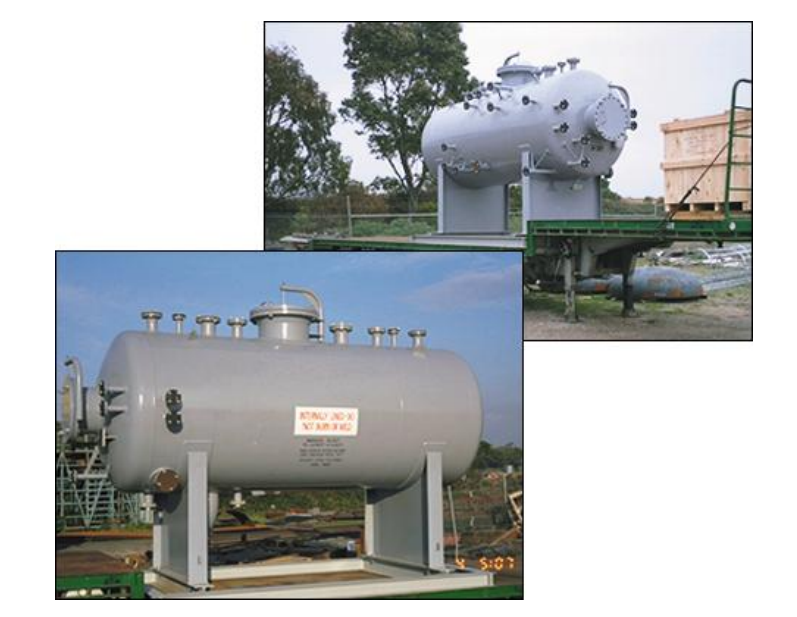
- (03) 5909 8218
- enquiry@fusionweld.com.au
Pressure Vessel Design and Fabrication – How to Meet Compliance Standards
April 04, 2025

Pressure vessel design by Fusion-Weld ensures compliance and safety through expert fabrication and inspection services, enhancing operational reliability.
Key Considerations in Pressure Vessel Design for Compliance
Pressure vessel design involves creating robust structures that withstand extreme conditions, ensuring safety and efficiency in various industries. The integration of the pressure vessel scheme into operational systems enhances reliability and meets stringent compliance standards.
Material selection is critical in the pressure vessel plan, as it directly impacts the vessel's ability to handle operating pressures and temperatures. Compliance requirements significantly influence design choices, necessitating careful consideration of factors like corrosion resistance and mechanical strength.
Operating conditions, such as pressure and temperature, dictate the design specifications of pressure vessels. Ensuring compliance with these conditions is vital to prevent failures and maintain operational safety.
Testing and Inspection Processes to Validate Pressure Vessel Design
Hydrostatic testing and non-destructive testing methods are employed to validate the pressure vessel scheme, ensuring that vessels can withstand maximum operating pressures without compromising safety. Regular inspections are essential for maintaining certification and preventing potential hazards.
The importance of regular inspections cannot be overstated, as they provide ongoing assurance of safety and compliance. These processes help identify potential issues before they become critical, ensuring continuous operation without interruptions.
Fabrication Techniques That Support Safe Pressure Vessel Design
Fabrication techniques such as welding and forming are crucial in creating pressure vessels that meet safety standards. Quality control measures are implemented throughout the fabrication process to ensure compliance with regulatory requirements.
Here are some key fabrication techniques and their descriptions:
• Welding Techniques: Advanced welding methods are used to ensure strong, leak-proof joints. These techniques are carefully monitored to meet quality standards.
• Forming Processes: Various forming processes are employed to shape the vessel according to design specifications. This ensures structural integrity and compliance with operational requirements.
• Material Testing: Materials are thoroughly tested for strength and durability before fabrication. This step is critical in ensuring the vessel can withstand operational stresses.
• Assembly and Installation: Vessels are assembled and installed with precision to ensure all components function as intended. This includes ensuring proper alignment and secure connections.
• Final Inspection: A comprehensive final inspection is conducted to verify that all fabrication and assembly standards have been met. This ensures the vessel is safe for operation.
Read this blog for more supporting details: A Step-by-Step Guide on Proper Pressure Vessel Design and Management.
Ensuring Compliance in Pressure Vessel Design
In achieving operational excellence, the pressure vessel model and fabrication must strictly comply with regulatory standards. Fusion-Weld Engineering ensures that all regulatory requirements are met, prioritising safety and efficiency.
Review our comprehensive vessel design & in-service inspections to explore how we can support your compliance needs and enhance your operational safety.
Related Content: Pressure Vessel Fabrication Process: Compliance Standards and Design Best Practices
Contact Details
Fusion - Weld Engineering Pty Ltd
ABN 98 068 987619
1865 Frankston Flinders Road,
Hastings, VIC 3915
Ph: (03) 5909 8218
Optimized by NetwizardSEO.com.au
Recent Posts
- Compressed Hydrogen Storage Vessels: Material Selection, Design & Australian Standards
- Welding QA/QC in Oil & Gas Pressure Vessel Fabrication – Ensuring Code Compliance
- AS1210 vs ASME VIII Pressure Vessel Code: Key Differences for Australian Projects
- Mitigating Hydrogen-Induced Cracking in Pressure Vessels: Engineering and Material Strategies
- Storage Tank Solutions Australia: Field-Erected, Prefabricated & Self-Bunded Explained
- Reducing Environmental Risks: Self-Bunded Tanks in Australian Oil & Gas Operations
- Precision in Production: How Pressure Vessels Are Manufactured for Industrial Safety
- Shell & Tube Heat Exchangers: Improve Thermal Control & Energy Recovery in Petrochemical & Pharmaceutical Plants
- In-Service Inspection for Compressed Air Receivers for Power Plant Shutdown Prevention
- Power Plant Pipe Spooling Fabrication – Get Rapid, Code-Compliant Spools Ready for Installation
- Field Erected Tanks: Safe, Reliable On-Site Fuel Storage Solutions in Australia
- Custom Pressure Vessel Fabrication for Flammable Gases
Posts 2025
- Compressed Hydrogen Storage Vessels: Material Selection, Design & Australian Standards
- Welding QA/QC in Oil & Gas Pressure Vessel Fabrication – Ensuring Code Compliance
- View all articles…
Posts 2024
- Large Process Vessels: Optimising the Design for Maximum Efficiency [2025]
- Pressure Equipment Management System Installation: Detect Equipment Faults Early
- View all articles…
Posts 2023
- Pressure Piping System Inspection: A Gift of Safety for the Holidays
- Deaerator Inspections by Fusion-Weld Engineering and How They Reduce System Downtime
- View all articles…
Posts 2022
- How Fusion Weld Keeps Up With AS-NZS ISO 9001:2008 Standard
- Boiler Equipment Safety Inspection During the Summer Season
- View all articles…
Posts 2021
- Avoid These Factors and Practices that Contribute to Sealing Damage in Pressure Vessels
- Do's And Don'ts Of Industrial Boiler Inspection And Maintenance From Fusion-Weld
- View all articles…
Posts 2020
- What are the Risks and Hazards Involved in Pressure Vessel Equipment?
- How to Know if Your Pressure Equipment Needs Repair or Replacement?
- View all articles…
Posts 2019
- Factors that Contribute to Pressure Vessel Failure
- Pressure Vessel Regulations in Australia: What are the Mandatory Requirements?
- View all articles…
Posts 2018
- Pros and Cons of Spherical vs. Cylindrical Pressure Vessels
- What are the Different Hazard Levels in Pressure Vessels?
- View all articles…
Posts 2017
- Transportable Pressure Vessels: The Importance of Inspection and Safety Checks
- Fracture Mechanics and Stress Analysis of Cracks in Pressure Vessels
- View all articles…
Posts 2016
Posts 2015
- What Are Deaerators & Feedwater Vessels?
- Precautions and Safety for Compressed Air Receiver Vessels
- View all articles…
Posts 2014
- Demonstrating In-process Inspection Procedures
- Static Grounding Practices and Standards
- View all articles…